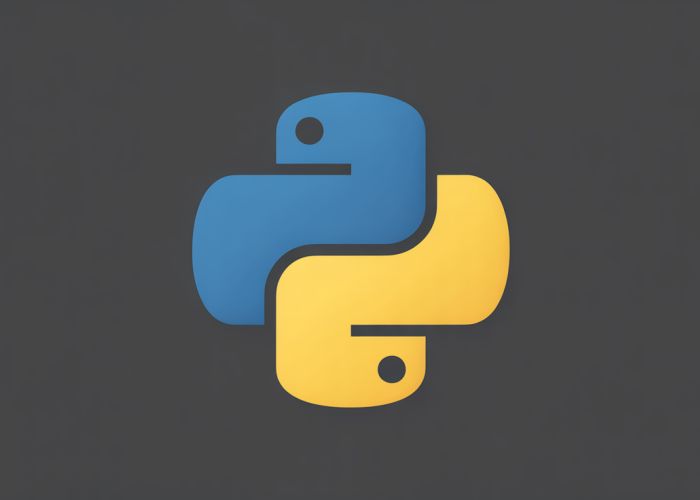The Python programming language, known for its versatility, often utilizes data structures such as dictionaries. A common task is initializing an empty dictionary, leading to the concept of a python empty map. This guide will explore how developers, from beginners to experts using platforms like Stack Overflow, can leverage python empty maps effectively in various applications.

Python Empty Map: The Only Guide You’ll Ever Need (Explained)
This guide provides a comprehensive understanding of Python empty maps, exploring their creation, usage, and applications. We’ll cover everything from the basic syntax to more advanced scenarios, ensuring you have a firm grasp of this fundamental data structure.
Understanding Maps (Dictionaries) in Python
Before diving into empty maps, let’s quickly review what maps, more formally known as dictionaries, are in Python.
-
Definition: A dictionary is a collection of key-value pairs. Each key is associated with a specific value.
-
Characteristics:
- Dictionaries are mutable (changeable).
- Keys must be unique and immutable (e.g., strings, numbers, tuples).
- Values can be of any data type.
- Dictionaries are unordered (since Python 3.7, dictionaries retain insertion order).
Creating an Empty Map in Python
The core concept is how to create an empty map. There are multiple ways to accomplish this.
Method 1: Using Curly Braces {}
This is the most common and straightforward way to create an empty dictionary.
my_dict = {}
print(my_dict) # Output: {}
print(type(my_dict)) # Output: <class 'dict'>
Method 2: Using the dict() Constructor
The dict() constructor can also be used without any arguments to create an empty dictionary.
my_dict = dict()
print(my_dict) # Output: {}
print(type(my_dict)) # Output: <class 'dict'>
Method 3: Clearing an Existing Dictionary
If you have an existing dictionary, you can empty it using the clear() method.
my_dict = {'a': 1, 'b': 2}
my_dict.clear()
print(my_dict) # Output: {}
Why Use an Empty Map?
Creating an empty map might seem pointless initially, but it’s a crucial technique for various programming tasks.
-
Initialization: Initializing a dictionary that will be populated later within a loop or function.
-
Accumulation: Using a dictionary to accumulate results, where keys and values are determined dynamically during program execution.
-
Conditional Logic: Creating an empty dictionary as a default return value or to handle specific edge cases.
Examples of Using Empty Maps
Let’s illustrate how empty maps can be useful in real-world scenarios.
Example 1: Counting Word Occurrences
This example demonstrates how an empty map can be used to count the occurrences of words in a string.
text = "this is a test string this is a string"
word_counts = {} # Initialize an empty dictionary
for word in text.split():
if word in word_counts:
word_counts[word] += 1
else:
word_counts[word] = 1
print(word_counts)
# Expected Output: {'this': 2, 'is': 2, 'a': 2, 'test': 1, 'string': 2}
Example 2: Creating a Mapping from Two Lists
This example shows how to create a dictionary from two lists, using an empty map to store the result.
keys = ['a', 'b', 'c']
values = [1, 2, 3]
my_dict = {}
for i in range(len(keys)):
my_dict[keys[i]] = values[i]
print(my_dict)
# Expected Output: {'a': 1, 'b': 2, 'c': 3}
Example 3: Handling Missing Data
Empty dictionaries can be used as a safe default when fetching data that might be missing.
def get_user_profile(user_id):
# Imagine this function fetches user data from a database or API.
# For simplicity, we simulate the possibility of missing data.
user_data = None # Simulate user not found
if user_data:
return user_data
else:
return {} # Return an empty dictionary if user is not found
profile = get_user_profile(123)
if profile: # Check if it is not empty
print("Profile loaded.")
else:
print("Profile not available")
Working with Populated Maps and Emptying them
Here’s a table summarizing the common operations associated with handling maps and clearing them
| Operation | Description | Example Code |
|---|---|---|
| Creating an empty map | Instantiates an empty dictionary | my_dict = {} or my_dict = dict() |
| Adding Key-Value Pairs | Adds a new key-value pair to the dictionary | my_dict['key'] = 'value' |
| Modifying Values | Updates the value associated with an existing key | my_dict['key'] = 'new_value' |
| Removing Key-Value Pairs | Removes a key-value pair from the dictionary | del my_dict['key'] or my_dict.pop('key') |
| Emptying a dictionary | Removes all key-value pairs, resulting in an empty dictionary | my_dict.clear() |
FAQs: Python Empty Map (Explained)
Here are some frequently asked questions about using empty maps (dictionaries) in Python, to help you understand the concepts explained in the guide.
What exactly is a python empty map?
A python empty map is a dictionary with no key-value pairs. It’s initialized using empty curly braces {} or the dict() constructor without any arguments. Think of it as a container ready to hold data, but currently empty.
Why would I use a python empty map?
You often use a python empty map as a starting point for building up a dictionary dynamically. This is useful when you don’t know the contents of the dictionary in advance but will populate it based on user input, data from a file, or results from a computation.
How is a python empty map different from None?
None represents the absence of a value, while a python empty map is a valid object (a dictionary) that happens to be empty. You can perform dictionary operations on an empty map, but you can’t perform them on None without causing an error.
Can I add values to an existing python empty map?
Yes, absolutely! One of the main purposes of creating a python empty map is to add key-value pairs to it later. You add elements using bracket notation, e.g., my_empty_map['key'] = 'value'.
And there you have it – the lowdown on Python empty maps! Hopefully, this helped clear things up. Now go forth and create those empty maps with confidence!